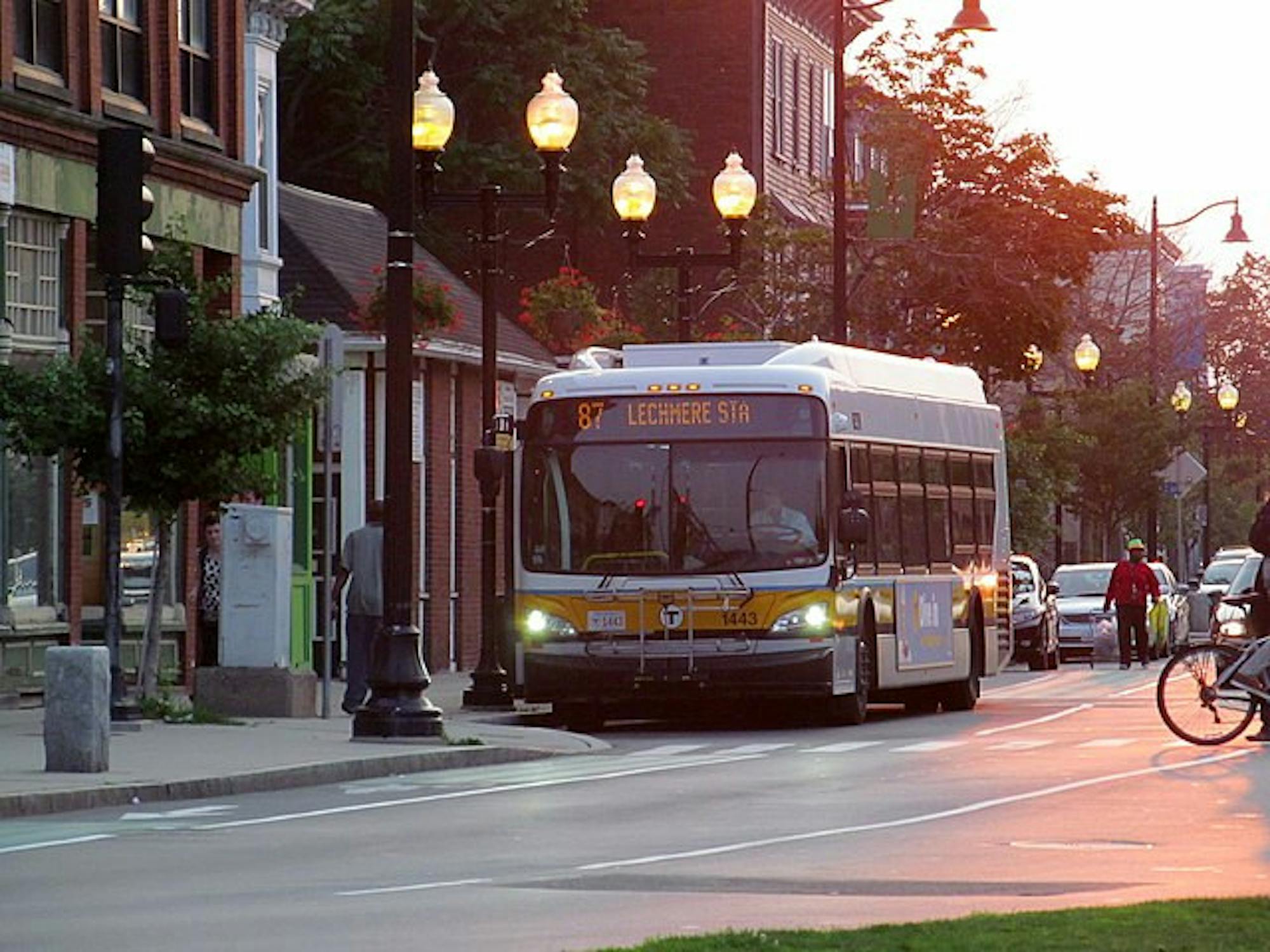The MBTA released an updated draft of its Bus Network Redesign, part of the Better Bus Project, on Oct. 27. Following the release of the first draft in May, the bus map underwent revisions based on community feedback.
The Better Bus Project, a $9.6 billion five-year investment plan, encompasses a variety of programs meant to improve transportation services in the region, including bus service. The redesign aims to increase service by 25% overall and by 70% on the weekends.
The plan will attempt to bring 275,000 residents closer to high-frequency service, which the MBTA defines as areas where buses run every 15 minutes or less, all day, every day. The plan will increase equity, providing 115,000 residents of color and 40,000 low-income households of these 275,000 residents with access to improved service.
“Transit is essential to the region's economy, especially post-pandemic, and [the] MBTA buses serve our most transit-dependent population,” Justin Antos, senior director of bus transformation at the MBTA, said at a Nov. 2 virtual public meeting discussing the Bus Network Redesign. “Bus ridership at the MBTA was the most resilient during COVID, stronger, even today, than many rail services. But our region has changed significantly over the past few years, … and our bus network needs to rise to the challenge and change with it.”
After receiving over 20,000 comments from the public in May, June and July, the MBTA made changes to 85 of the 133 routes in its May draft proposal.
Doug Johnson, project manager for the Bus Network Redesign, said that one of the main concerns his team heard regarded transfers between one bus service to another. Many frequent routes went from requiring no transfers, rides they call “one-seat rides,” to rides requiring transfers to other buses, or “two-seat rides.”
“Making a transfer is not a huge time penalty for most folks, but obviously there are many riders for whom making a transfer does create a barrier to using the system,” Johnson told the Daily. “For a lot of our senior riders, folks with disabilities or mobility impairments, transfers can be particularly difficult.”
Johnson recalled that Somerville and Medford were two of the communities that the project heard the most feedback from. Notable changes to routes impacting Medford and Somerville include the return of the 87 to its current route, which runs from Arlington to Lechmere.
The May draft proposal had changed the route so that the 87 went to Sullivan Square from Arlington, but public feedback indicated that many riders currently use the route to get to Lechmere, so the change was reversed.
At the Nov. 2 public meeting, Senior Director of Service Planning Melissa Dullea addressed some of the changes that were made based on community feedback.
“Sometimes we've made route changes to better serve medical facilities or senior housing or other destinations at the request of municipalities and others,” Dullea said. “Sometimes we've added new routes back into the proposal, … [and] sometimes we've made frequency or span adjustments.”
The MBTA also modified the proposal for the 80 line.
“[The current 80] is pretty duplicative of the Green Line extension,” Johnson said. “However, [the GLX] doesn't go to West Medford or Arlington, so that final leg of the 80 was missing in our network. … We ended up modifying our proposal for the route 350, changing what it does slightly, renaming it to the 80 and also having it go from Arlington Center to Davis Square by way of Tufts.”
The 89, which runs from Davis Square to Sullivan Square, was put back into the proposal, as its inclusion will allow riders to get from Winter Hill to Davis Square on a one-seat ride. The 90 has also been adjusted to run from Clarendon Hill Apartments in Somerville to Assembly Row, rather than running all the way through to Chelsea, as was originally proposed. This was done in order to shorten the route, which improves service reliability.
Finally, the proposed changes to the 96, which currently runs through Medford Hillside and serves George Street and Winthrop Street, were altered.
“We had essentially straightened the route out a little bit, with the idea being that with frequent routes, it's better to reduce the number of turns that they have to take and have them be as straight as you can,” Johnson said. “It makes it easier to provide the reliability of service we want to have, but we heard a lot of feedback from folks in Medford Hillside, specifically on George Street and Winthrop Street, about that modification because of how hilly that part of Medford and Somerville [is].”
Hilly topography was a significant factor considered in the latest draft proposal.
“The topography of Somerville is challenging for a lot of riders, there's really steep streets, which can make it difficult to access bus services,” Johnson told the Daily. “So even if a bus service is only a quarter of a mile away from you, if there's a really steep hill, it can be really tough to get to. That was part of the reason why we ended up modifying some of the services in Somerville and Medford.”
These changes will be implemented over five years beginning in summer 2023, though a shortage of bus operators is putting pressure on that timeline. Most transit agencies nationwide, with a few exceptions, are experiencing similar shortages.
“As of Oct. 26 we had 1,569 active bus operators, and we were short 312 in order to provide the amount of service we ran pre-pandemic,” Johnson wrote in an email to The Daily. “We anticipate needing another 442 operators on top of that to provide the increase in service reflected in the redesigned bus network.”
The MBTA plans to account for the bus operator shortage by adjusting both hiring and onboarding policies, according to Johnson.






